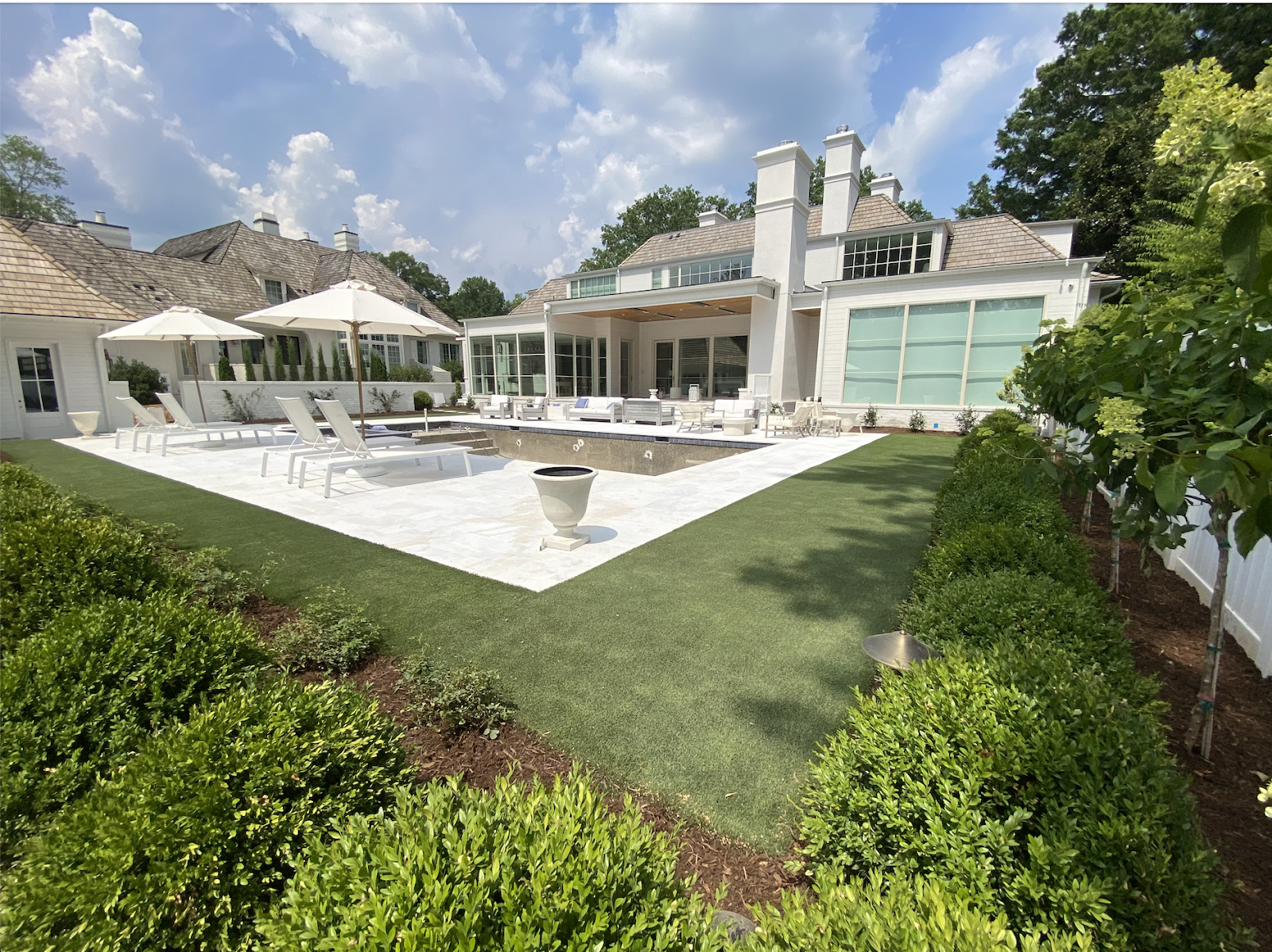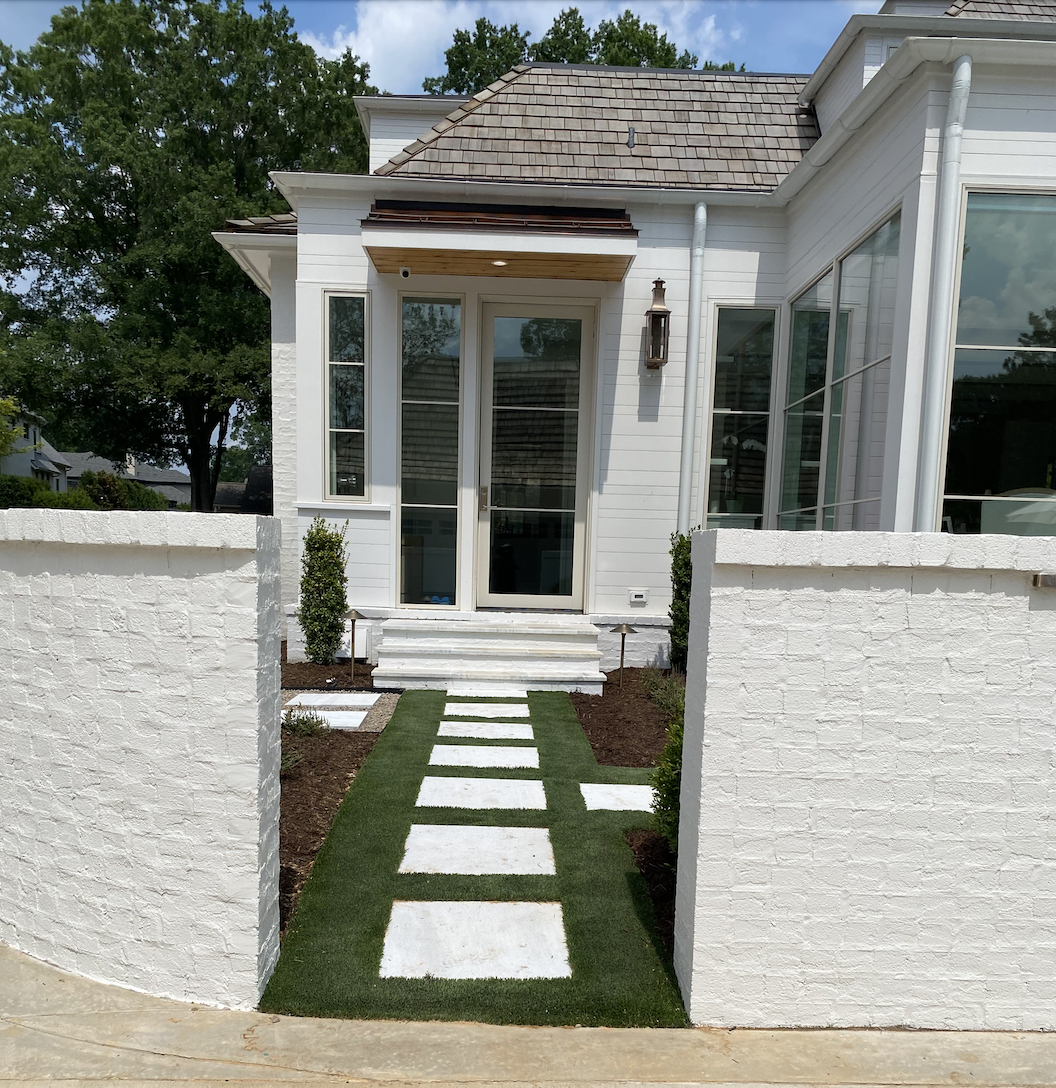Artificial Lawn Grass Turf: Benefits, Installation and Maintenance Tips

Artificial lawn grass turf is a highly popular choice for both landscaping professionals and DIYers looking to step up their outdoor designs. It has low maintenance needs, helps homeowners save on long-term costs and keeps its bright green aesthetic all year round.
However, it does need to be installed and maintained optimally, and learning the proper techniques will help ensure the best results for a flawless yard design.
Benefits of Artificial Lawn Grass Turf
When it comes to turf, there are several key benefits that make it a great choice for residential projects.
Low Maintenance
While there are also benefits to a natural lawn, real grass requires significantly more maintenance than artificial grass to remain healthy and aesthetically pleasing. This maintenance includes regular mowing in the warmer months, as well as fertilizing, aerating, seeding and controlling weeds and pests.
In contrast, artificial lawn grass turf has fewer maintenance needs to stay looking fresh and fulfill its purpose. In many cases, the only maintenance needed is semi-regular brushing, removal of debris, and spot cleaning stains if needed. This can make artificial turf a better choice for busy homeowners.
Durability and Longevity
A natural lawn can easily become worn down by foot traffic, stained or damaged by pets or sun exposure. High-quality, protected artificial grass, on the other hand, is not harmed by UV rays, heat or cold.
Artificial blades are also less likely to become permanently flattened, as they are designed to spring back into their shape. Although pet waste and other spillages will need to be cleaned from artificial turf, the material is porous enough to prevent permanent damage or staining.
Environmental Benefits
Maintaining a neat, natural lawn can require the use of pesticides, herbicides and fertilizers, which can be harmful to the environment.
Mowing lawns also increases a homeowner’s carbon footprint, especially if a gas-powered mower is used. Appliances such as grass trimmers, leaf blowers, and weed whackers can also produce emissions.
Because an artificial lawn does not require any of these chemicals or appliances, utilizing turf can be significantly more eco-friendly.
Aesthetic Appeal
Synthetic grass can retain its vivid green color throughout the entire year. On the other hand, natural grass is subject to fading and color changes from seasonal shifts, chemical use or pet waste. For a consistent look all year round, artificial turf is the best option.
Cost-Effective in the Long Run
Because turf doesn't require pesticides, herbicides, lawn mowers and other tools associated with lawn maintenance, it doesn’t cost as much as natural grass does in the long term. Additionally, the reduced need for watering can also save homeowners noticeable amounts of money over time.
Installing Artificial Lawn Grass Turf

Preparation of the Area
When it comes to installing artificial turf, preparation is key. At this first stage, clear the ground of objects such as rocks, roots, weeds and other plants.
Level the area with a shovel and/or a rake, and consider any drainage issues. It is recommended to install a sub-base layer of porous aggregate such as crushed stone.
Choosing the Right Turf
The right turf product will vary based on the requirements and budget of your project. When it comes to material, polyurethane is generally recommended as it's a premium choice. Its benefits include superior durability, weather defense, wear resistance, suitability for high traffic areas and incredible dimensional stability.
Pile height and density are also worth considering, as areas with high foot traffic can benefit from short pile and high density, while the opposite may suit more decorative areas best.
Turf Installation Process
The process of installing artificial turf is fairly straightforward, but it must be done carefully to avoid mistakes. Here’s an overview of the proper steps.
- Step 1: Use base aggregates to compact and level a proper base.
- Step 2: Unroll turf rolls across the base.
- Step 3: Starting from one end, seam adjacent turf rolls together.
- Step 4: Cut the perimeter of the turf to fit the area.
- Step 5: Secure the turf to nailer boards at the edges.
- Step 6: Use nails across the lawn’s surface to secure it to the ground, stretching the turf tight as you go.
- Step 7: Add infill material evenly across the lawn's surface.
Securing the Turf
To secure the turf in place, use nails and adhesive at the edges of the lawn’s perimeter and at the seams between each strip of turf.
Maintenance Tips for Artificial Lawn Grass Turf
Cleaning and Removing Debris
Any grass, natural or artificial, is prone to debris such as leaves, dead insects and even animal waste. Unfortunately, these can degrade and release chemicals that can damage the appearance or integrity of a lawn if left untreated.
To remove debris from turf, simply spray the lawn with a hose and apply a gentle detergent if needed. After this, a brush with a broom will remove dirt and debris, and then the lawn can be left to dry.
Brushing and Fluffing the Turf
When brushing the blades, try to brush vertically and upward to maintain the integrity of the pile. This can reverse the effects of turf being flattened by foot traffic or heavy objects, keeping the lawn looking new and fresh.
Dealing with Stains and Odors
Unfortunately, many substances can stain and cause odors for even the most durable artificial lawns. Spilled drinks and food are particular culprits, especially during the summer when barbecues and al fresco dining are common.
Thankfully, water and a small amount of common detergent can get the cleaning job done. For grease or oil spills, try water with baby shampoo or dishwashing liquid, and blot the spillage with a sponge or cloth before brushing. It’s best to act quickly, as this will make the cleaning more effective.
Ensuring Proper Drainage
To make sure that water and other liquids drain properly rather than pooling on the lawn, opt for turf strips that include small drainage holes. This means that homeowners can rinse their lawns and even use paddling pools without worrying.
Common Issues and Troubleshooting

Turf Fading and Discoloration
Although artificial turf is significantly less prone to fading and discoloration than natural grass, it is still recommended to put protective measures in place to keep the lawn looking as vibrant as the day it was purchased. Also, be sure to choose turf products made from high-quality and durable materials to mitigate risk.
A common culprit of turf fading is when UV rays reflect off a home’s windows and onto the ground. To reduce the risk of UV reflection, buy protective UV tinting for windows. Additionally, try to avoid metal objects on the lawn, as they can also attract sunlight and increase the risk of discoloration.
Wear and Tear
To reduce wear and tear on the lawn, carry out regular maintenance such as cleaning, brushing and removing debris. Avoid placing heavy items directly onto the turf if possible.
Managing Pets and Turf
For homeowners with cats or dogs, try to find an alternative place where they can use the bathroom, like a surrounding woods area. If they do use the turf, be sure to clean it up and rinse it off as soon as possible to avoid lasting damage.
Choose Markham’s Top-Quality Artificial Turf Products
Artificial lawns are a great option for homeowners who want an outdoor design that keeps its charm all year long. Plus, other advantages like low maintenance, reduced long-term costs and improved sustainability make it an even more appealing option.
If you’re wanting to get started on selecting artificial turf for your lawn project, look no further than Markham. We offer a variety of excellent artificial turf products, as well as many other landscaping products, to ensure your outdoor design goals are met.
Ready to discover the best turf solution for your needs? Get in touch with our team for expert advice on the top-performing products that will ensure long-term success.


Get Your Free Quote Today
Transform your outdoor space with our expert materials.





